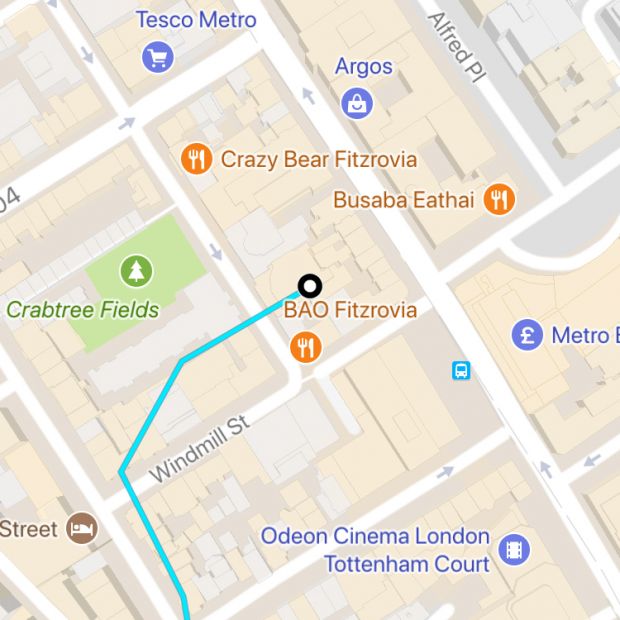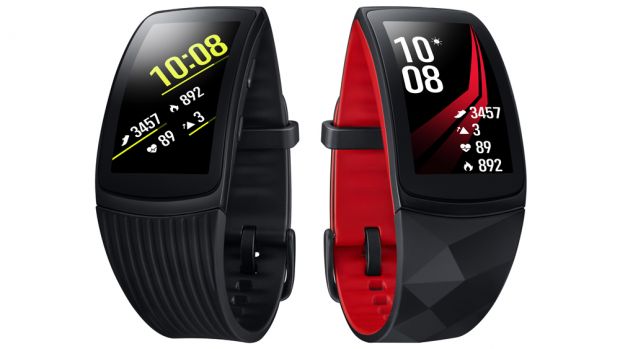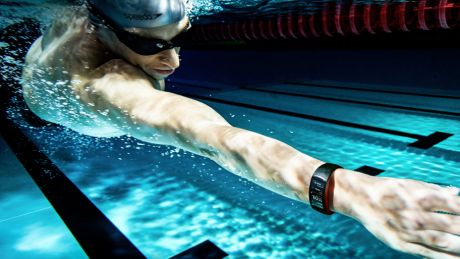Our Verdict
Most fitness-tracking smartwatches cost around £300 (see Fitbit Ionic, Garmin Vivoactive 3, Apple Watch, Huawei Watch 2 and Samsung’s own Gear Sport), but the Gear Fit2 Pro offers a comparable set of features while undercutting them all. It’s got standalone GPS, a heart rate monitor, it’s an excellent swim tracker, and it can store and stream music to Bluetooth headphones. Apps-wise, it’s not as good as any watch built on iOS or Android Wear, but it beats Fitbit and Garmin’s app offerings hands down by offering Spotify and Under Armour’s suite of services, including the calorie counting favourite My Fitness Pal. Plus, if you own a Samsung phone you can download the SpeedoOn app, making the aquatic offering even more compelling.
For
- It’s great value. The feature set is a big step up from mid-range trackers that cost between £150 and £200, and a big step down in price from smartwatches without sacrificing much.
- The swim tracking is great. It nailed stroke recognition in the pool and even the heart-rate reading was believable. If you’re a pool swimmer this should be top of your shopping list.
- Loading music on to the Gear Fit2 Pro is exceptionally well done, with easy pairing of Bluetooth earphones and reliable streaming.
- There’s a frankly silly number of watch faces to choose from.
- Where the native run and cycle tracking apps fall down, Under Armour’s Endomondo, MapMyRun and Record step in to improve the experience.
- Samsung is one of the few smartwatches to offer a Spotify app – and that’s what you use now, right?
- You can track individual bodyweight exercises like the squat, lunge or press-up. Sets and reps can be changed, and reps were counted unfailingly accurately.
Against
- The battery life is poor – it won’t last 24 hours even without using GPS.
- Using the Gear Fit2 Pro with an iPhone 6 was a faff, and also meant I couldn’t download the SpeedoOn app. This is a watch for Android users, but Samsung owners especially.
- You can’t locate a GPS signal and then start a run or ride. You have to start the activity and hope the signal locks in, which it failed to do a number of times in our tests.
- The live pace reading on Samsung’s running app was too sensitive, jumping all over the place to the point where it became useless.
- The plasticky strap feels a bit cheap and there’s no way to change it.
You can trust Coach
£209, buy on samsung.com
RECOMMENDED: The Best Fitness Trackers
Samsung Gear Fit2 Pro In-Depth
Using The Samsung Gear Fit2 Pro To Track Activity
The Gear Fit2 Pro covers all the bases for activity tracking and covers them well: steps, floors climbed, calories burned, active minutes, and, for the latter, automatically tracking and adding anything above a moderately fast walk to your number. I had no complaints about the accuracy, it passed all the basic sense tests and the details are all available on the watch itself – if anything, the app is a bit lacking in detail.
The default daily targets are 6,000 steps and ascending the equivalent of ten flights of stairs but each is easily changed on the watch, and the stats screens on the watch gives an average for the previous four weeks as well as the count for each day. That may sound like a lot of information to display on a pretty small screen, but the layout is easy to read. The app adds monthly trends and the “average steps at a healthy pace” number, a nice extra that might reveal that you’re juicing your step count with frequent trips to the vending machine.
As with almost all activity bands, the Gear Fit2 Pro will buzz at you after a period of inactivity, in this case 50 minutes of stillness (although the feature is suppressed when you’re sleeping or if you turn Do Not Disturb on). It’ll suggest a few torso twists, demonstrate the move on the screen and count the reps, but if you get up and make a cup of tea it’ll be satisfied.
You’ll also receive a weekly activity summary on the watch every Monday at noon detailing your calorie burn, steps taken, flights of stairs climbed, time spent moving at a “healthy pace” and sleep, plus a percentage change compared with the week before. It’s a comprehensive offering and packaged up smartly.
Using The Samsung Gear Fit2 Pro For Working Out
If you’re a fan of fitness classes the Gear Fit2 Pro will track sessions and show the duration, calories burned and your heart rate during exercise. The latter is also colour-coded so you can see which heart rate zone you’re in – especially useful during HIIT classes.
However, if you like to follow interval workouts on your own, you’ll find the Gear Fit2 Pro is lacking a customisable interval timer to guide you through work and rest periods. I also couldn’t find an app on the Samsung Galaxy store (at least that works with iOS) that will satisfy this need. Even the Endomondo app, which normally offers interval workouts, can’t on the Gear Fit2 Pro.
There are specific modes for sessions on cardio machines, like an exercise bike, treadmill, rowing machine, elliptical and step machine, but each option tracks the same thing: heart rate – it just labels it accurately in the app. You can set a calorie burn target or the duration of the session and the device will buzz when you reach your goal.
There’s the option to track reps of some bodyweight exercises. Customise the number of sets and reps to perform, and the watch will demonstrate the move on screen. It asks you to adopt the start position and buzzes when it’s happy with your form, then you complete the reps. I tried unweighted squats and lunges and the rep counter was spot on. The watch then counts down a minute of rest (although you can skip this) until the next set.
It’s a neat feature but it would be far better if it had been developed further into a guided workout. Sure, you could string together a bunch of exercises, but there’s more to creating a workout than picking a few gym moves. It’s also a step behind the rep counting feature on some Garmin models, which takes an impressive stab at automatically recognising exercises in a multi-move workout.
Using The Samsung Gear Fit2 Pro For Running
With the addition of built-in GPS, the Samsung Gear Fit2 Pro should appeal to semi-serious runners eager to get accurate pace stats on the hoof and pour over their splits afterwards. Frustratingly, the native tracking app has some serious flaws that means runners should think twice.
The biggest beef I have is that you can’t fire up the GPS, wait for it to lock on to a signal, and then start the session. Instead, you hit start, get a three-second countdown before the timer starts and the Gear Fit2 Pro starts looking for a satellite. You can either stand there as the timer ticks away, throwing off your pace stats for the first kilometre and your average speed for the whole run, or you can set off and hope the GPS clicks in quickly. Unfortunately, it’s harder for any device to get a signal on the move so while I tended to choose the latter, I managed to get through a 40-minute run in central London without GPS.
When the GPS did get a lock, I found that the live pace stat rapidly jumped around all over the place – sometimes from four minutes a kilometre to eight to six and so on. I’ll admit my pace probably isn’t smooth, but I’d expect the software to smooth the readings out (I assume that’s what Fitbit does on its built-in GPS devices, the Surge and Ionic, where I’ve relied on the pace reading without issue).
This fault also torpedoes the pace-setter sessions available on the device. There are seven runs to follow, with the device setting the pace at which you run to achieve different goals (from light jogging to speed endurance), buzzing at you if you’re going too fast or too slow. I tried it once, it continually buzzed at me and I gave up, which is a shame because it’s a great idea that’s more commonly found on running watches than fitness smartwatches.
The issue is less pronounced if you use a third-party app to track your run. I ran using Endomondo as well and found it to be more usable, although still jumpier than I’d like. There is also MapMyRun and Under Armour Record to try, but sadly not Strava, although you can set the Samsung Health smartphone app to automatically export GPS sessions to the social network.
One huge benefit for runners is that there’s built-in memory for music that you can stream directly to Bluetooth earphones, so you can head out without your phone – but only for a limited amount of time. I got one hour 15 minutes of GPS and music off of a full charge. Not enough considering I was running a half marathon and I am not that quick. It’s one area where the Gear Fit2 Pro can’t compete with more expensive smartwatches.
For runners who aren’t that bothered about more advanced features, which is probably the majority, the Gear Fit2 Pro will do the job. However, it does lag behind other devices, both smartwatches and cheaper GPS running watches. The Garmin Vivoactive 3 can handle music and GPS for five hours, the Apple Watch 3 even more.
RECOMMENDED: The Best Running Watches
Using The Samsung Gear Fit2 Pro For Cycling
The Gear Fit2 Pro is suitable for casual cyclists, but even then it’s far from the best in class. The GPS suffers from the same problem of not being able to lock on to a GPS signal before starting a ride. This screenshot also shows the accuracy of the GPS once it’s locked on.

For the avoidance of doubt I started at Alfred Place and cycled along Windmill Street. This lack of accuracy isn’t confined to the Gear Fit2 Pro (especially in central London), but reinforces the sense that you shouldn’t ask too much of the Gear Fit2 Pro’s GPS.
The Gear Fit2 Pro does automatically log cycling, so in theory you shouldn’t need to worry about manually starting and stopping a session and still have the activity contribute to your calorie burn and active minutes stats, but it seemed to take too long to recognise when I was moving. My cycle commute is always somewhere between 40 and 45 minutes. On one day the Gear Fit2 Pro logged 12 minutes there and 17 minutes back. This is something Fitbit and Garmin can do with a much higher degree of accuracy.
Using The Samsung Gear Fit2 Pro For Swimming
The Gear Fit2 Pro has taken its lumps up till this point, but swimming may well be the killer app that persuades you to buy one.
For starters the heart rate monitor remains on in the water, something many brands shy away from. It worked well, matching my expectations of how hard I was working.
I was also very impressed with the device’s automatic stroke recognition, nailing breastroke and backstroke, although it did call my really, really poor front crawl attempted without goggles as “mixed” (the stroke was, to be fair, all over the place). It also counted lengths correctly, which is no small feat.
The only issue with the native app on the device is that you can only set the pool length as 25 metres, 50 metres or 25 yards. No good if you swim in a small pool at your gym.
In the Samsung Health app there’s a breakdown of lengths, along with your best and average length duration. It’ll also tell you your pace and SWOLF score, the latter a measure of your efficiency in the water.
This is the first swim tracker I’ve tried that brings tracking up to the level I’d expect for running and cycling. It’s useful, intuitive and more importantly it works reliably.
If you have a Samsung phone, you can also download and use the SpeedoOn app on the device. SpeedoOn is a sprawling resource of workouts, training plans, technique drills and more. While I was unable to try it, I’m betting it adds a new dimension to swim trackers.
RECOMMENDED: The Best Waterproof Fitness Trackers
Using The Samsung Gear Fit2 Pro As A Heart Rate Monitor
The heart rate monitor on the Gear Fit2 Pro works as well as you’d expect any wrist-worn tracker to – a few readings seemed way off mid-exercise but that’s par for the course.
For monitoring your heart during the day you can turn the HRM off (which didn’t save battery like I hoped it would), or have it taking readings frequently or always. Keeping it always on allows the Gear Fit2 Pro to start recording any small bit of activity during your day, like a fast walk.
There’s plenty of information available on the smartphone app – the time you spent in various zones, your maximum, minimum and average heart rate – but strangely resting heart rate isn’t prominently displayed as a single number, but rather as a range on a graph.
RECOMMENDED: The Best Heart Rate Monitors
Using The Gear Fit2 Pro For Calorie Counting
The calories you’ve burned are only viewable on the Gear Fit2 Pro, not the app strangely, but it’s the best layout of the information I’ve seen. The colour coded timeline breaks up your day – from sleeping to light activity, to walking, cycling, running, working out or moving at a healthy pace – to show when you were burning the most calories. Click on each segment for your heart rate and calorie burn during that period.

Using The Samsung Gear Fit2 Pro As A Smartwatch
Apple Watch users and owners of smartwatches that use Android Wear as the operating system are spoilt for choice. Everyone else, not so much, but Samsung gear leads the rest of the pack thanks to the Under Armour and SpeedoOn apps already covered above.
Samsung is also one of the few smartwatch manufacturers to offer a Spotify app (it’s also available on Android Wear). Once you’ve logged in (which I failed to do, but I’m putting this one down to user error/anger) and connected the device to WiFi, it acts as a standalone music player streaming through any connected Bluetooth device. Since playlists aren’t available offline, it’s good to use in your home, at work or the gym (if you have decent WiFi in each place), but less so outside unless you tether it to your phone.
There’s also space for music on the Gear Fit2 Pro. The Music Manager on the watch gives a web address to hit on the browser on your computer and, as long as your device is connected to WiFi, you just drag and drop music to download to the device. No software to download, no cables. I also found setting up Bluetooth headphones and streaming music from the device to them easy and reliable – basically everything you want in this department. Kudos, Samsung.
Finally, the device relayed notifications from my phone without any additional set-up and included enough characters from emails, WhatsApp and text messages that I could make a decision as to whether it was worth getting my phone out or not. It’s what you’d expect, but it’s rarely executed as cleanly as this.
Apart from being able to answer calls by swiping the Gear Fit2 Pro’s screen, communication between phone and watch was one-way, however, so the Gear Fit2 Pro was the dumb partner in this relationship, but that’s standard unless the wearable and phone are from the same manufacturer.
Using The Samsung Gear Fit2 Pro For Sleep Tracking
Samsung is up there with the best in sleep tracking because it’s included guidance as to whether the sleep tracked is good-quality or not. Like many trackers, the Gear Fit2 Pro will track the time asleep (and get it right, cough Garmin cough) and split it up into light, motionless (presumably deep) and restless periods. But on top of that it gives you a (somewhat mysterious) efficiency score and a much plainer rating of good, fair or poor.
There’s also a sleep goal in the app that allows you to set target times to go to bed and wake up, because consistency in this area is widely accepted as a factor in how well you sleep. The feature can also take your caffeine intake into account if you manually add it in the app.
The device is comfortable enough to wear through the night and Samsung’s wisely included a Do Not Disturb feature so the brilliantly bright screen doesn’t switch on when you turn over in bed and stir you (it really can get quite bright). The only downside is that the poor battery life means you’ll need be on top of charging to avoid having the device die during the night.
RECOMMENDED: The Best Sleep Trackers
The Samsung Health App
Because I was using an iPhone I had to install two apps, Samsung Gear Fit which connects your device to your phone and provides access to the Galaxy app store, and Samsung Health, the companion app proper.
I had a few syncing issues from time to time which were resolved with a few attempts or turning things on and off again – nothing too bad but it’s not as slick as platform-agnostic brands like Fitbit and Garmin. I’ll wager you won’t get these problems if you’re on an Android or Samsung phone, though.
While the Samsung Health app doesn’t look as nice as its competitors’ apps, there’s plenty of depth if you spend the time clicking around. For instance, if you manually record your weight the app will also calculate your BMI (a measure that’s not without its problems but something worth knowing).
In particular I liked the goals for activity, sleep and nutrition, which can help to turn dumb information into something more useful. For the latter goal, you can set your target calorie intake and then log what you eat throughout the day as well as getting a nutrient score (low, average/recommended and high) for protein, carbs, total fat and saturated fats, fibre, potassium, vitamins A and C, calcium, iron and sodium. If you’re buying a tracker to improve your health rather than, say, helping you train for a marathon, this feature is a fantastic addition.
How Often Am I Going To Have To Charge It?
A lot. On a full charge the app estimates around 20 hours of use, and turning the heart rate monitor off only buys you an extra 30 minutes. Not stretching to a full day is a let-down in light of the solid sleep-tracking features, but perhaps you can find a regular time each day to charge it. About an hour and a half is enough to go from zero to full.
Using GPS is a serious battery hog too. I wore the Gear Fit2 Pro and the Fitbit Ionic for a run of one hour and ten minutes. The Ionic used about 20% of its charge, but for the Samsung device it was more than half.
There is a power saving mode which the Gear Fit2 Pro will prompt you to turn on when it hits 20% battery, but that means a greyscale screen, and step and stair counting only. Annoyingly, it doesn’t automatically turn it off if you recharge it so I’ve turned the feature on, recharged it when convenient and strapped it back on but forgotten to turn off power saving mode, missing phone notifications I really could have done with seeing.
Where Can I Wear It Without People Laughing At Me?
Plump for the all-black model and you’ll get by pretty much anywhere. It’s more of a band than a watch so it may not fly in conservative workplaces, but it’s reasonably sleek and inconspicuous. There are also a metallic blue and pinky-red models available, but consider your choice carefully because you’re stuck with it – you can’t change bands like you can with other trackers.
Should I Consider Buying Something Else?
Until very recently I would have said no, unless you’re happy to pony up another £100-plus to move up a price bracket, or ditch the smartwatch and swimming chops and go for the ultra-cheap Huawei Band Pro 2 or Amazfit Bip, both of which’ll bag you GPS and a heart rate monitor for something in the region of £50 if you shop around.
However, it seems manufactures have cottoned on to the £200 price point for a smartwatch. Fitbit is releasing the Versa smartwatch in April, which beats the Gear Fit Pro 2 for running, cycling (even though it needs to piggyback off a smartphone to offer GPS tracking), battery life, general slickness of the app and experience, and style, but isn’t as good at swim tracking or being a particularly smart smartwatch.
There’s also a new entrant, the Mobvoi Ticwatch, which while not waterproof does have GPS and a heart rate monitor, but its biggest asset is being built on the Android platform so it should offer far, far better apps. Another option is the Suunto 3 Fitness, although initial reports from a colleague are iffy. Reviews of all three are incoming.
The Gear Fit2 Pro remains an impressive option, though. If you own a Samsung phone, are a regular swimmer or already use any of Under Armour’s fitness apps, it’s certainly worth serious consideration.

Jonathan Shannon was the editor of the Coach website from 2016 to 2024, developing a wide-ranging experience of health and fitness. Jonathan took up running while editing Coach and used the training plans on the site to run a sub-40min 10K, 1hr 28min half marathon and 3hr 6min marathon. He’s an advocate of cycling to work and is Coach’s e-bike reviewer, and not just because he lives up a bit of a hill. He also reviews fitness trackers and other workout gear.

